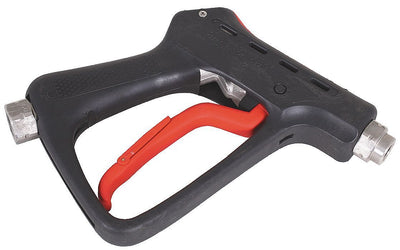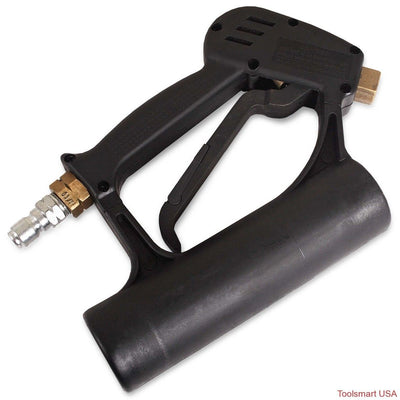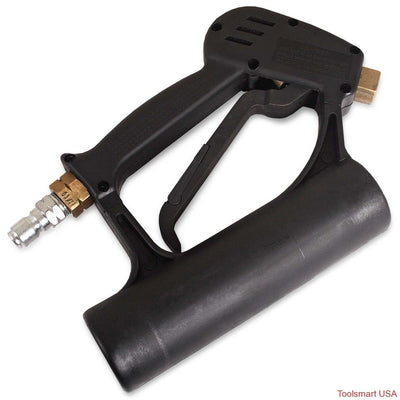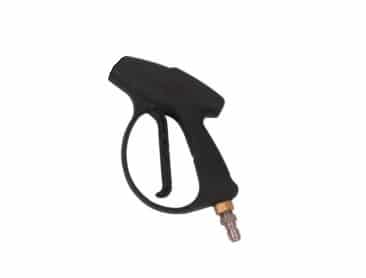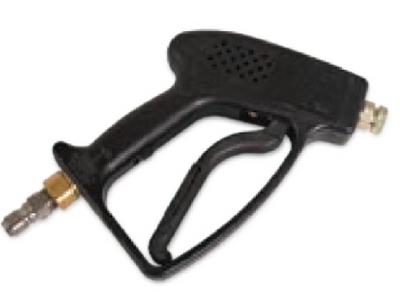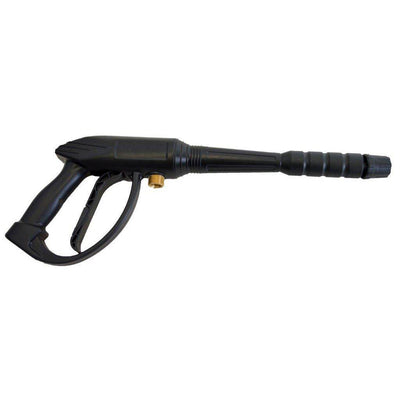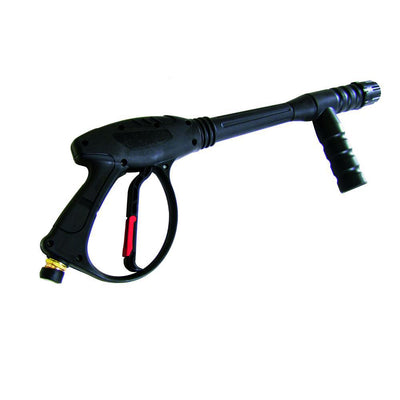How to Use a Paint Spray Gun – A Complete Guide
Spraying paint has a variety of benefits compared to rolling or brushing, it can be faster and provide a smoother appearing finish than brushing or rolling. However, to achieve good results spraying paint you have to know how to use a spray gun. While there are a variety of spray gun types from HVLP to Conventional, to airless, to air assist airless, knowing how to use a spray gun is critical to get a good result. It is also important to choose the proper spray gun for what you are spraying. We have a variety of resources at the end of the article that should help choosing the right spray gun but the remainder of this article will focus on how to use a spray gun.
Step 1 for Using a Spray Gun – Prepare your Paint or Coating for Spraying
The first step that is critical in using a spray gun is ensuring your paint is properly prepared for spraying. In general to use paint in a spray gun your paint cannot be too thin or to thick. For airless or a pressure fed spray gun, you can spray thick paints without needing as much thinner. However, for gravity and suction fed spray guns paint will have to be slightly thinner than most latex paint. For best results you can also use a Zahn 2 cup and verify the paint runs between 20 and 30 seconds as this will typically spray well from any spray gun (but especially gravity and suction feed spray guns). Once you have verified your paint is properly thinned next you should ensure your product surface has been properly prepared.
Step 2 for Using a Spray Gun – Prepare the Product Surface
As important if not more important than having your coating prepared and understanding how to use your spray gun is having the product surface properly prepared. How the surface will be prepared will depend on the type of paint you use, the surface type you will be painting, and many other variables. Most coatings will have a technical data sheet that shows how the surface should be prepared. However, it is always a good general rule to ensure your product surface has been clean of any dust just prior to painting by using a thinner to wipe down the surface.
Step 3 – Select the Proper Fluid Tip and/ or Air Cap
If you are using a spray gun that offers a variety of air caps and fluid nozzles, you want to review the cap and nozzle options available in order to select the best size suited for the paint you will be spraying. For most gravity spray guns you have to pick a fluid tip that allows paint to flow when you have the triggered pulled. Once you know you have a tip atleast big enough to allow the material to flow, next is ensuring that your tip is allowing you to control the amount of paint you apply effectively. This can require performing a few test patterns to see if you are comfortable without the amount of paint that you are getting out of your spray gun. You can also refer to many spray gun manuals or talk with us to have a better idea of the tip sizes that are most common for different materials. You will want to verify your air cap is meant for the viscosity of paint your spraying as some air caps are not designed to atomize heavier material. For more on selecting a spray gun air cap check out this guide, you can also refer to our article on choosing an air cap and choosing a fluid nozzle. Of course if your spray gun only has one air cap and fluid nozzle option then you use what you have and go on to the next step to see if you can spray the material.
Step 4 – Begin Adjusting Air Pressure
Once you have properly thinned the coating based on the technical data sheet and a Zahn cup the next step is to begin increasing air pressure until you get the paint break up you want to achieve. If your using an HVLP Spray Gun you want to keep pressure to the gun below the pressure listed on the spray gun cap, which represents the maximum pressure that you can use and still get the paint waste reducing benefits of HVLP. You want to increase air pressure while doing test sprays with the goal of achieving the proper amount of break up. Below is an image of different levels of finish from a general industrial finish to an automotive quality finish, just remember the smaller the paint particles appear, the better finish you will have however if you overdo it then you can get a dry spray finish (see the video below for additional help in fine tuning the pattern).
Step 5 – Use Good technique
While your painting (if your using an air spray gun) you want to keep the spray gun about 6 – 8 inches away from the product's surface or about a hands length. You want to move back and forth at an even pace. You also want to overlap each pass by about 40%. You want to keep the spray gun perpendicular to the surface and avoid swinging your wrist. All of this will ensure you have an even consistent spray technique and result in the best finish.
Step 6 – Evaluate Your Initial Results
You may also want to perform a check on how much paint you put on the surface after a pass or two to ensure that you have selected the proper tip and are moving at the right speed to apply enough material. If material runs while painting that typically signals that your paint is to thin or your tip is too big. On the flip side if you are not getting enough paint you may be using to small of a tip or may need to consider using a pressure feed spray gun or airless paint sprayer.
Step 7 – Finish the Part
After all the initial work has been completed you can go ahead and spray paint the rest of the product.
Step 8 in using a spray gun – Write all the settings and details Down!
If you get the results you hoped for it can benefit you greatly to record how much thinner you added to your paint, the air pressure settings, the fluid tip, and air cap you used. This information will help you get repeatable results if you spray the material again in the future.
Step 9 – Clean your Spray Gun
After your job is finished you want to be sure to thoroughly clean your spray gun so that it will perform well for you the next time you need it. Proper cleaning will involve emptying all paint from the spray gun, running cleaner (solvent or water depending on the paint type used) through the spray gun until cleaner is coming out of the gun, and then ensuring the air cap is thoroughly cleaned as well.
Summary
Ultimately getting a good result when using your paint spray gun is achieved by first selecting the proper spray gun for the job you are doing, second properly preparing the coating so that it will work well with your spray gun, third preparing the surface for paint so that the finish doesn’t get contaminated, and fourth following the steps discussed to adjust the spray gun and follow good technique. If you follow these steps you should find you can get good results out of your paint spray gun and if not it may be that the spray gun was not designed to meet the demand of your project.



